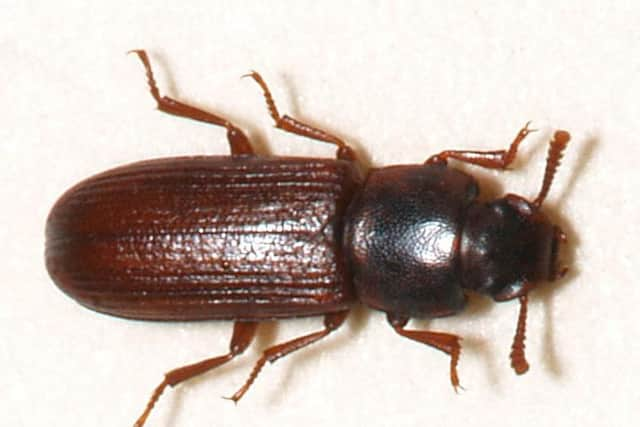Biscuit Beetle: An Overview
The biscuit beetle, scientifically known as Stegobium paniceum, is a common household pest that can cause significant damage to stored food products. It is a small, reddish-brown beetle that typically measures between 2 to 3 millimeters in length. Biscuit beetles are also known by several other common names, including the drugstore beetle, bread beetle, and biscuit weevil.
These beetles are notorious for infesting and feeding on a wide range of food products, including biscuits, cereals, pasta, spices, and other dry goods. They can cause extensive damage to stored food items, rendering them inedible and leading to significant economic losses for households and businesses alike.
In this article, we will discuss the identification, behavior, life cycle, and control measures for biscuit beetles.
Identification
Biscuit beetles are small, reddish-brown beetles that measure between 2 to 3 millimeters in length. They have a distinctive hump-backed appearance and are easily identifiable by their elongated, flattened bodies. The beetles also have antennae that are distinctly segmented and end in a club-like structure.
Behavior
Biscuit beetles are primarily active at night and are attracted to light sources. They are known to infest and feed on a wide range of dry food products, including biscuits, cereals, pasta, spices, and pet food. They can also infest other organic materials, such as books, leather, and animal specimens.
Life Cycle
The life cycle of biscuit beetles typically consists of four stages: egg, larva, pupa, and adult. The eggs are small, white, and oval-shaped, and are typically laid on or near food products. The larvae are creamy-white, elongated, and have a distinct head and six legs. They feed on the infested food products and can cause significant damage. The pupae are typically found in a silk cocoon and can take up to several weeks to develop into adult beetles. The adult beetles live for several months and can reproduce quickly, laying up to 100 eggs during their lifespan.
Control Measures
Prevention is the best approach to controlling biscuit beetle infestations. Here are some tips to help prevent infestations:
- Store food products in airtight containers.
- Regularly inspect food products for signs of infestation, such as webbing or small holes.
- Clean up spills and crumbs promptly.
- Dispose of infested food products immediately.
- Vacuum and clean food storage areas regularly.
If an infestation does occur, here are some control measures that can be taken:
- Remove all infested food products and dispose of them.
- Vacuum and clean all food storage areas thoroughly.
- Use pheromone traps to capture adult beetles.
- Apply residual insecticides to infested areas.
In conclusion, biscuit beetles are a common household pest that can cause significant damage to stored food products. Prevention is the best approach to controlling infestations, and regular inspection and cleaning of food storage areas can help to identify and prevent infestations. If an infestation does occur, prompt removal and proper control measures can help to minimize the damage and prevent future infestations.


Comments
Post a Comment